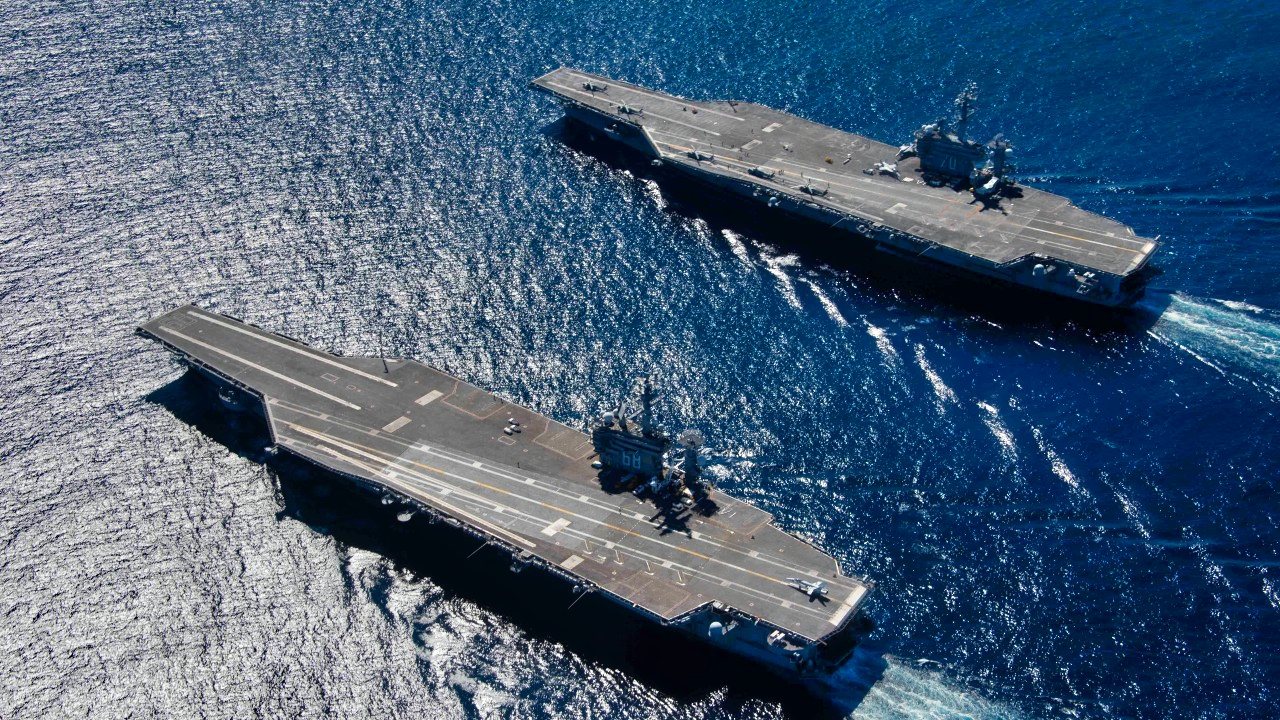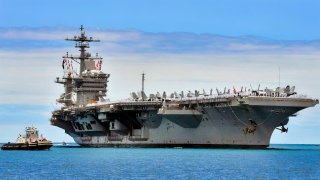China's Submarines Have the Abilty to Now 'Track' U.S. Navy Aircraft Carriers
In 2015, a Chinese Kilo-class submarine was reported to have tracked the USS Ronald Reagan, a U.S. Nimitz-class nuclear-powered supercarrier, in the waters of Japan.
Summary: In 2015, a Chinese Kilo-class submarine was reported to have tracked the USS Ronald Reagan, a U.S. Nimitz-class nuclear-powered supercarrier, in the waters of Japan. This event was reminiscent of Cold War naval encounters, yet it didn't cause significant concern at the time due to the relative detectability of Chinese submarines. Experts viewed these events as opportunities to learn about Chinese capabilities, noting that Chinese submarines were noisier and technologically behind.
2015 Chinese Submarine Incident: A Prelude to Emerging Naval Tensions
As previously reported by Harrison Kass for The National Interest, in 2015, United States defense officials acknowledged that a Chinese submarine tracked an American aircraft carrier in the waters of Japan. It involved a Chinese Kilo-class submarine closely shadowing the U.S. Navy's Nimitz-class nuclear-powered supercarrier USS Ronald Reagan (CVN-76).
CVN-76 had only recently begun serving as flagship of Carrier Strike Group 5, after arriving at her homeport of Yokosuka, Japan.
According to a report from CNN in November 2015, the submerged Kilo -class fast-attack submarine shadowed the USS Ronald Reagan for at least half a day on October 24, while the news outlet added, "At the height of the Cold War, American and Soviet ships and submarines would stalk each other across the world’s oceans in a high-stakes game of cat and mouse, testing each other's capabilities."
Experts downplayed the incident.
"The truth is, we track them tracking us, and we learn about their capabilities," Robert Daly, then-director of the Kissinger Institute on China at the Woodrow Wilson Center. "Chinese submarines are growing in number, but they're still relatively noisy. They're at least a generation behind us. And when they track us, we find out what they are capable of."
As Kass also reported, the USS Ronald Reagan wasn't actually trying to conceal its movements, nor was it working to evade detection while it operated off the coast of Japan.
Thus, it would seem to be a case of a "nothing burger" – a story that barely garnered much media attention at the time and is hardly worth mentioning today.
Moreover, just days after the not really all that close encounter with the Chinese sub, two Russian Tupolev Tu-142 aircraft (NATO reporting name Bear F/J) – a maritime reconnaissance and anti-submarine warfare (ASW) variant of the Tu-95 turboprop strategic bomber – flew within one mile of the ship at low altitude. The USS Ronald Regan scrambled four armed F/A-18 Hornets to intercept the Russian planes.
That incident was arguably the more worrisome of the two – at least at the time.
Why Does This Matter Today?
The reason this story has been revisited again is that as reported by The Wall Street Journal last November, for decades, the U.S. Navy didn't really have to worry all that much about China's submarines.

"They were noisy and easy to track. The Chinese military, meanwhile, struggled to detect America's ultraquiet submarines," the paper of record stated. "Now, China is narrowing one of the biggest gaps separating the U.S. and Chinese militaries as it makes advances in its submarine technology and undersea detection capabilities, with major implications for American military planning for a potential conflict over Taiwan."
Beijing has been building submarines at an impressive rate, and its Type-039C Yuan- class was developed with enhanced stealth technology. The People's Liberation Army Navy (PLAN) submarines are getting quieter and harder to detect with sonar.
In other words, in 2015, the U.S. Navy knew – and even told the media – that a Chinese fast attack submarine was shadowing it. Today, it is far less clear if the same carrier strike group will be able to detect the presence of the Chinese boats, and even if they can today that might not be so true in the coming years.
Author Experience and Expertise: Peter Suciu
Peter Suciu is a Michigan-based writer. He has contributed to more than four dozen magazines, newspapers, and websites with over 3,200 published pieces over a twenty-year career in journalism. He regularly writes about military hardware, firearms history, cybersecurity, politics, and international affairs. Peter is also a Contributing Writer for Forbes and Clearance Jobs. You can follow him on Twitter: @PeterSuciu.
You can email the author: [email protected].


